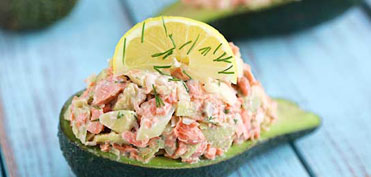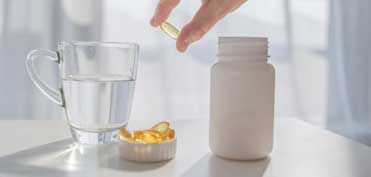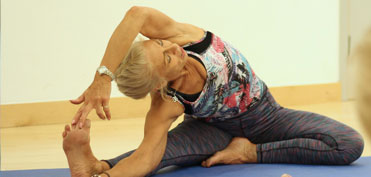But what is the science behind these claims, and what should your diet look like if you are
concerned about how chronic inflammation is affecting your health?
Inflammation is your body’s natural fight against things that harm it in an attempt to heal itself. When an infection, injury, or toxin is introduced, damage to cells triggers the immune response that eventually brings your body back to its normal, healed state. For instance, if you get a cut, the damaged cells trigger the blood vessels in the area to open up so that immune cells can rush to the site of injury. You’ll experience some redness, heat, swelling, and pain to the area for a period of time as the immune cells go to work, and then the cut will heal. However, in cases of chronic inflammation, this response fails and your body is in a constant state of alertness. Over time, this inflammatory response can start to damage healthy cells, tissues, and organs. This can set the stage for the development or
progression of disease. Conditions
associated with chronic inflammation
include some types of cancer, heart
disease, rheumatoid arthritis, fibromyalgia, lupus, type 2 diabetes, obesity, celiac
disease, ulcerative colitis, irritable bowel syndrome, asthma, and Alzheimer’s disease.
Nutrition has been found to play a key role in both promoting and combating the inflammatory process. However, always
remember that it is the overall pattern of how you eat that is most important, not a single meal or even a day’s or week’s worth of eating now and then. Furthermore, food is a joy, and restriction – especially over-
restriction – can take the joy right out of
eating, not only for you but also for those who share meals with you. In attempt to build
a more anti-inflammatory diet, therefore, we will look more at which foods and strategies to add into your diet, rather than emphasizing
the foods and food groups to cut out.
First of all, centre your meals around plants. When we think of a plant-based diet, we often simply think of vegetables and fruits. However plant-based eating also includes nuts, seeds, whole grains, vegetable oils, and even coffee, tea, and (gasp!) chocolate
and red wine. These foods contain anti-inflammatory nutrients or compounds such as ascorbic acid (vitamin C), vitamin E, polyphenols, and flavonoids, as well as prebiotics. While it may be important to eat some of the above foods in moderation (or not at all, depending on your individual health profile), they can add flavour, variety, and satiation amidst your sea of greens.
Secondly, go for the high-performing fuel. Carbohydrates are your body’s greatest
source of energy, and unfortunately, they have gotten a bad reputation over the years. When combined with healthy sources of protein and fat, fibre-rich carbohydrates – such as fruit and whole grains – will moderate your blood sugar curve, provide essential nutrients, and keep you satisfied until your next regular meal or snack. Just keep in mind that a spike in insulin can increase the inflammatory response, so choose carbohydrates that contribute more to your diet than just quick energy, and remember to combine them with other fat-rich or protein-rich foods for the best effect.
Lastly, believe in the power of a healthy fat. The omega-3 fatty acids EPA and DHA help to stop the signaling molecules in your body that promote inflammation, all the while helping to create more of the signaling molecules that prevent inflammation. While fatty fish and fish oil are the most effective omega-3s in combatting inflammation, healthy fats such as chia seeds, walnuts, canola oil, and flaxseed oil may also play a role.
Remember that the best diet plan is one that is individualized to your unique needs – your likes and dislikes, your budget, your habits, your health, and your routine. If you have trouble incorporating the above tips into your life and would like to learn more, seek out a Registered Dietitian to help.
Try the recipe below as an easy lunch to savour at home or pack along to work.
Salmon-Stuffed Avocadoes

½ cup plain Greek yogurt
½ cup diced celery
2 tbsp chopped fresh parsley (or substitute 1 tbsp dried parsley)
2 tsp mayonnaise
1 tsp Dijon mustard
1/8 tsp salt
1/8 tsp pepper
2 cans salmon, drained and flaked (5 ounce)
2 avocadoes
chopped chives for garnish (optional)
Directions:
Combine yogurt, celery, parsley, lime juice, mayonnaise, mustard, salt, and pepper in a medium bowl; mix well. Add salmon and mix well.
Halve avocadoes lengthwise and remove pits. Scoop about 1 Tbsp flesh from each avocado half into a small bowl. Mash the scooped-out avocado flesh with a fork and stir into the salmon mixture.
Fill each avocado half with about ¼ cup of the salmon mixture, mounding
it on top of the avocado halves.
Garnish with chives, if desired.






